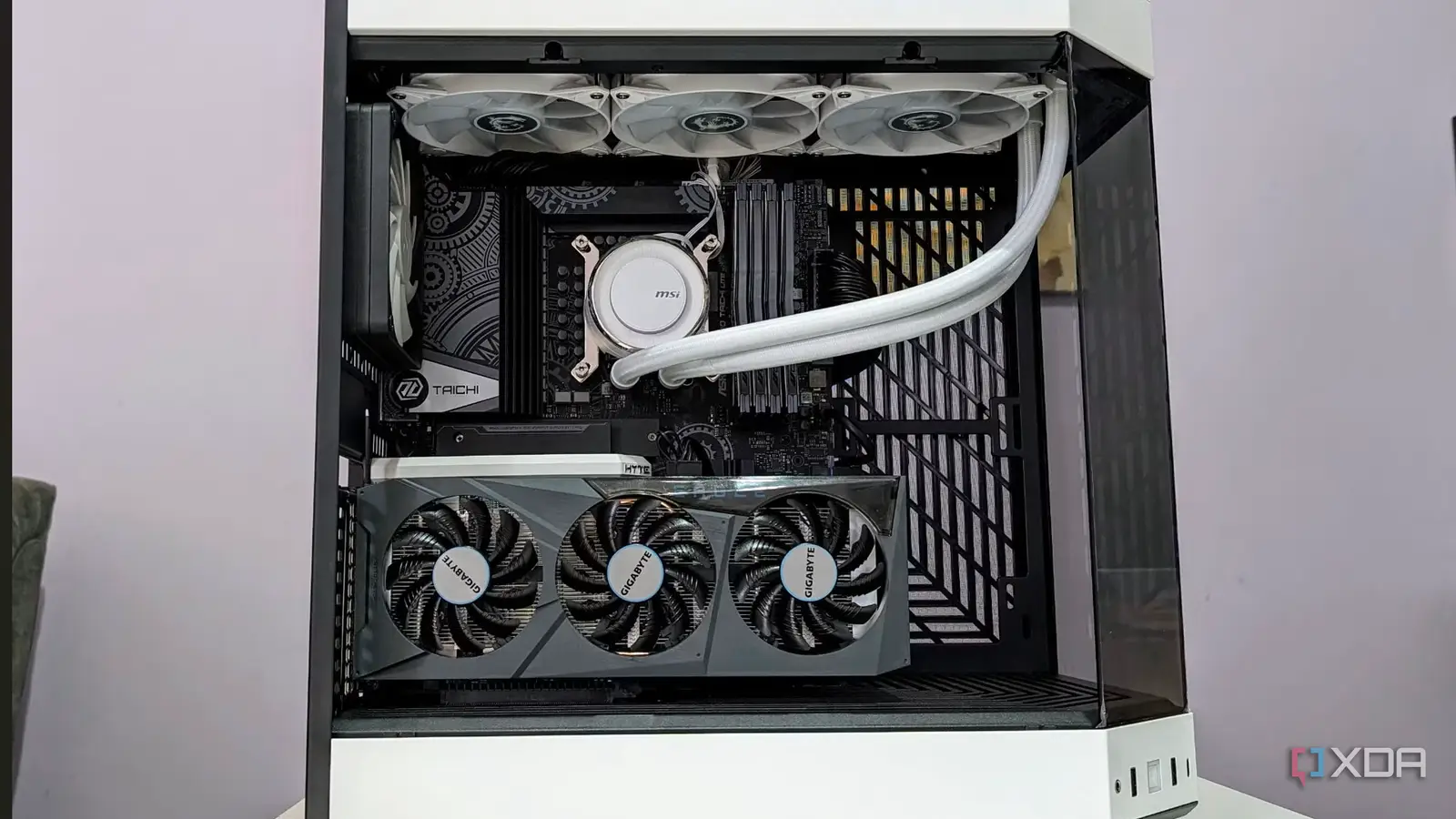
PCIe bifurcation has firmly planted itself as a necessary technology in consumer PC hardware. At its simplest, it’s just the process of dividing the lanes from a single PCIe slot into multiple smaller groups. For instance, you can take a full x16 slot and split it into four x4 slots, allowing for multiple devices to share that same set of lanes.
This allows small form factor PCs to expand beyond the single slot that is featured on many ITX motherboards, and has become increasingly relevant in situations where every slot counts. Despite being more pervasive than ever, there’s still a lot of fiction surrounding PCIe bifurcation and how it works.
“You need a workstation or server board for it to work”
Not the case anymore
You wouldn’t be blamed for thinking this is true, especially if you’ve been in the PC enthusiast game for a long time. In the early days of PCIe bifurcation, it actually was true. Only workstation boards and server boards that had chipsets like Intel’s X99 or AMD’s TRX40 had bifurcation options exposed in the BIOS. If you go back far enough, some consumer boards weren’t even wired for that kind of flexibility, but recent platforms have flipped the script entirely.
Modern consumer chipsets, like the high-end Z890 for Intel or the X870E for AMD, fully support bifurcation, and even mid-range chipsets like the B650 support it. Your options get a little thin on the Intel side as you move below the high-end, at least on the Core Ultra side of things.
It is still worth looking for bifurcation support before you buy. Most motherboard manuals will indicate how much bifurcation they support, and how exactly to configure it for your specific use case.
“It can damage hardware”
There’s virtually no danger of this
This myth likely persists because the word “bifurcation” sounds like you’re manually rewiring the slot, or forcing the CPU to do something unintended. In reality, enabling bifurcation is really nothing more than a configuration toggle, and can’t harm your hardware.
When you enable bifurcation in BIOS, all that happens is the PCIe controller (on your CPU or chipset) changes how it enumerates lanes during initialization. There’s no increase in voltage, no electrical rerouting, and no risk of overcurrent. At worst, if your board or adapter doesn’t support the configuration, the devices just won’t show up in your OS.
The only time users run into problems is when using cheap risers or adapters that aren’t properly wired for the bifurcation layout they’ve chosen. We’ll get to that, but a faulty riser doesn’t mean the process of bifurcation itself is dangerous at all.
“You lose a lot of performance”
Dividing bandwidth isn’t the same as throttling it
Another myth that seems to crop up a lot around bifurcation is the misunderstanding of performance. Splitting lanes is mistaken as cutting performance in half, or worse, depending on how many lanes you’re bifurcating to. The truth is that bifurcation doesn’t throttle or limit bandwidth beyond what’s expected from the lane count you assign.
For example, if you’re running a GPU at x8 on a PCIe 4.0 link, the performance drop compared to x16 is unnoticeable in pretty much any consumer workload you can think of. That’s because each PCIe 4.0 lane already provides 2GB/s of bandwidth, and most GPUs don’t fully saturate even eight lanes.
The myth likely stems from older PCIe 2.0 and 3.0 systems, where each lane carried significantly less data and bandwidth bottlenecks were common. Today, even PCIe 4.0 x4 provides around 8GB/s per device, which is far beyond what most consumer workloads require. The one situation where you might run into issues with bandwidth is when you’re running a GPU with a small VRAM buffer. Anything under 10GB has the potential to put more stress on the link as your card has to dip into system memory, and the result can be heavy performance penalties.
“All PCIe risers are unreliable”
Stick to the new stuff and you’ll be fine
When it comes to myths about bifurcation, this one has the most truth to it, but it’s one that you likely won’t have to worry about, as long as you’re careful about which riser you buy. Early GPU riser cables, especially during the crypto-mining boom, were notorious for being unstable or poorly built. Many of them weren’t shielded, had improper grounding, or used thin traces that couldn’t maintain signal integrity. The result was devices dropping out under load, which gave risers a bad name. When choosing one, look for explicit PCIe Gen 4 or Gen 5 compatibility, preferably the latter, as these tend to have the best chance of working without a hitch. If your system only supports up to Gen 4, get a Gen 4 riser.
Bifurcation is an excellent solution to many PCIe problems